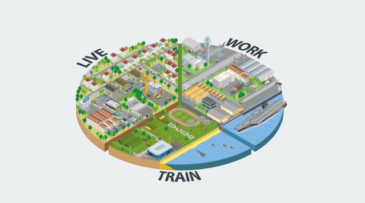
On 27th January 2022, the Strategy for Defence Infrastructure was released. This strategy provides the framework for the next five years for the transformation and modernisation of the Defence estate and development of its assets over the coming decades.
The vision for the Defence estate is “a safe estate, fit for purpose to deliver military capability and support our people”.
The Defence estate is comprised of 68% “rural estate” for training and ranges, and 32% “built estate” containing offices, technical facilities, and storage and support for military equipment and inventory.
The strategy has three policy aims:
- Have an estate that supports people and enables Defence capability and the delivery of Defence outputs
- Modernise the estate, embracing innovation, to ensure that it is fit for the future
- Transform the way the estate is thought about and managed
The strategy sets out nine objectives within the policy aims:
(1) Ensure the right infrastructure is available, both in size and location, for now and in the future
There is recognition that the Defence estate has not evolved at the same pace as the changing demands placed upon it over time, leading to an oversized estate with underutilised areas. Therefore, there is a need to adjust the size of the estate, investing into a smaller consolidated estate footprint that is better able to support the delivery of current capability and adaptable to future demands.
(2) Arrest and reverse the decline in the condition of the estate
Transition to the Future Defence Infrastructure Services programmes in 2022, which considers how Facilities Management on the Defence estate will be delivered once the current generation of contracts come to an end.
(3) Ensure the estate is resilient to current and emerging security threats, natural hazards, and the impact of climate change
The Covid-19 pandemic has demonstrated the dependence the estate has on resilient supply chains to deliver projects. Their disruption could undermine the ability to deliver the ambition of this strategy and the delivery of Defence capability. Therefore, government seeks to work with industry partners to help them to improve their resilience, in terms of commercial, data security, and their own supply chains.
(4) Preserve the value of the assets across the estate, maximising their benefit to Defence
Work with the infrastructure supply chains to improve productivity, maximising the application of asset management principles, Government Soft Landings and Modern Methods of Construction
(5) Ensure the living and working environment meets the needs of Future Forces
Ensure whole life design, performance, construction, operating and maintenance standards are aligned to current requirements and reflective of modern living, working and training expectations and government policy commitments
(6) Ensure sustainability is enhanced across the Defence estate
A net zero and climate resilient infrastructure – designed, constructed and operated now to enable decarbonisation by 2050.
(7) Exploit innovation and transform construction and procurement
Supply chain relationships are a key tool to support and drive innovation. For the relationship to be successful, a shared goal should be established, with common purpose, fostering clear, transparent and open lines of communication.
(8) Provide effective and integrated infrastructure skills and capacity to enable Defence outputs
MOD has implemented a Functional leadership framework to drive a more coherent approach to manage the Defence estate and maintain an enterprise-wide oversight.
(9) Build and leverage strong partnerships to support MOD in delivering objectives
There is a need to broaden partnerships with industry and encourage new companies, especially small and medium-sized enterprises to work with government, to exchange best practice and bring innovative ideas to help better deliver the estate. Also, by looking to encourage secondments with industry and increase engagement with professional bodies such as the Institute of Asset Management and the Green Building Council, new ideas, skills, and knowledge can be brought in across Defence infrastructure.





